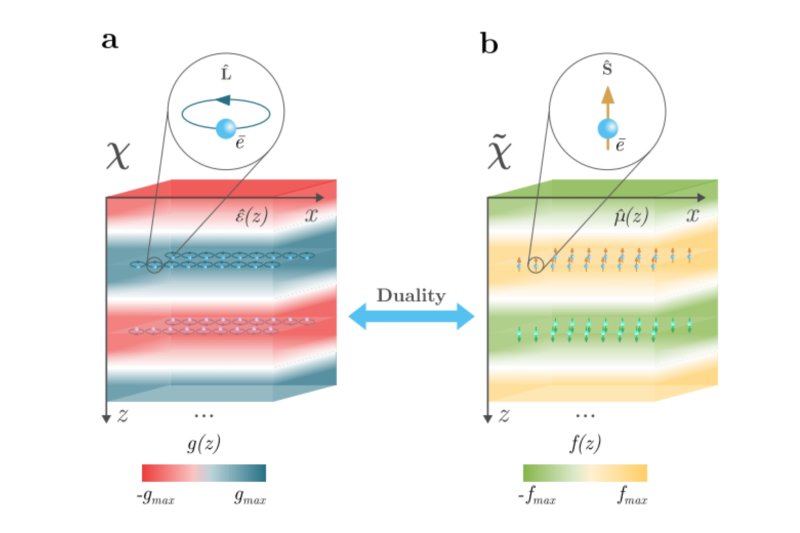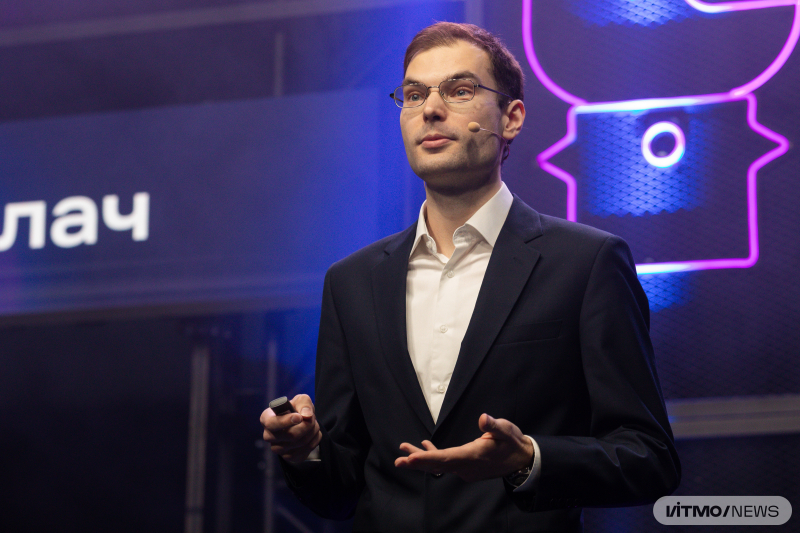Physicists at ITMO University have found a new type of an electromagnetic response in a medium. The newly discovered phenomenon has been dubbed a dual axion response and is different from the usual axion response, which has been a common research subject in photonics and condensed matter physics lately. The discovery casts a fresh perspective on previous experimental data and lays the foundation for a new field of study. The research is supported by the Russian Science Foundation and published in Nature Communications.

Credit: sakkmesterke / photogenica.ru
Axions are hypothetical particles that, if they were to exist, would explain symmetry violations in the Standard Model and fit the role of dark matter particles. Despite axions not having been found yet, similar phenomena are detected in solids and photonic structures. Aside from their permittivity and permeability, such structures are described using an effective axion response, which breaks the symmetries of spatial inversion and time reversal and allows researchers to study the effects of axion electrodynamics in lab conditions.
In their study, researchers from ITMO have predicted a new type of electromagnetic properties of a medium – a dual axion response. Thus far, the team has described how to find the response in metamaterials – which are artificial structures – but there is every reason to believe that the new type of response exists in the natural realm, as well.
“When one describes a conventional axion response through Maxwell's equations, they see additional electrical sources; however, the system’s electric charge remains unchanged. Whereas for a dual axion response – these are magnetic sources, yet the magnetic charge is still at zero,” explains Timur Seidov, the first author of the paper and a PhD student at ITMO.

A metamaterial with an effective axion response (a) and a dual axion response (b). Illustration by the researchers
The idea of incorporating magnetic charges into Maxwell's equations is not new. It was formerly considered by theoretical physicists but abandoned since magnetic monopoles were not found in nature. However, the intricacies of collective excitations in solid-state structures proved to be more complex and promising.
“For many years, researchers believed that in order to obtain equations for electrodynamics in a medium, they would have to make some polarization- and magnetization-related changes to one pair of Maxwell's equations and leave the other untouched. We see the same paradigm in most textbooks – and I myself have taught my course based on this belief, too. But it turned out that some mediums exhibit changes in both pairs, which leads to entirely unexpected results,” comments Maxim Gorlach, a senior researcher at ITMO, the team’s leader, and the last author of the paper.

Maxim Gorlach. Photo by Dmitry Grigoryev / ITMO NEWS
For the response to be demonstrated, the researchers had to conduct a thorough theoretical analysis and large-scale numerical modeling.
“A medium with a dual axion response scatters the incident light the same way as a medium with a usual one. Therefore, we need to simulate the interaction between the material and its charges to present credible evidence of this new physics,” says Eduardo Barredo-Alamilla, the second author of the paper and a PhD student at ITMO.
The researchers suggest that some experiments mistakenly interpreted a dual axion response as a usual axion response.
“According to the conventional paradigms of photonics, it is enough to shine light on a material in different ways and study the scattered field to understand the material’s electrodynamic properties. Whereas our research shows that it is not always the case,” notes Timur Seidov.
The research team also proposed an experiment to distinguish between the two.
“The first results seemed so unusual and intriguing that we spent two years trying to understand and formulate a new concept. I have no doubts that our work will pave the way for a new field of study and even more breakthroughs. In fact, this is the university’s only study in Nature Communications that has been conducted entirely by ITMO researchers,” concludes Maxim Gorlach, the head of the frontier laboratory.
The research was conducted as part of the Russian Science Foundation grant № 23-72-10026 and the Priority 2030 program.
